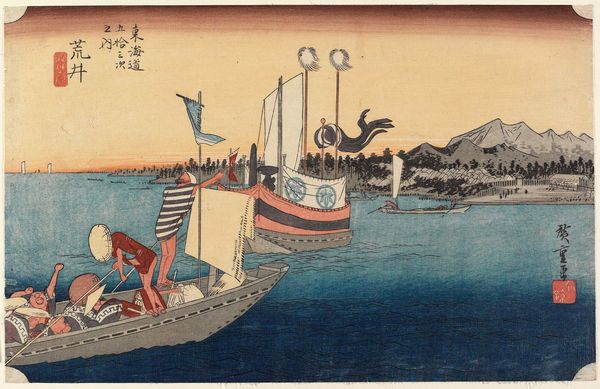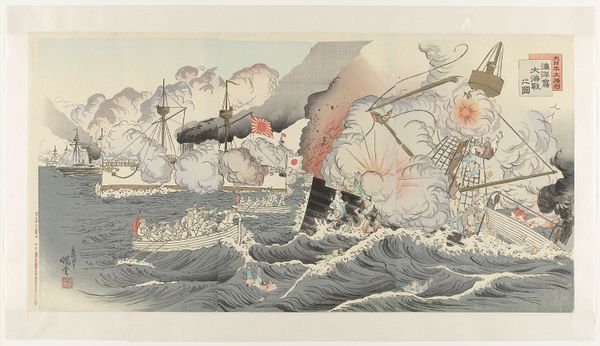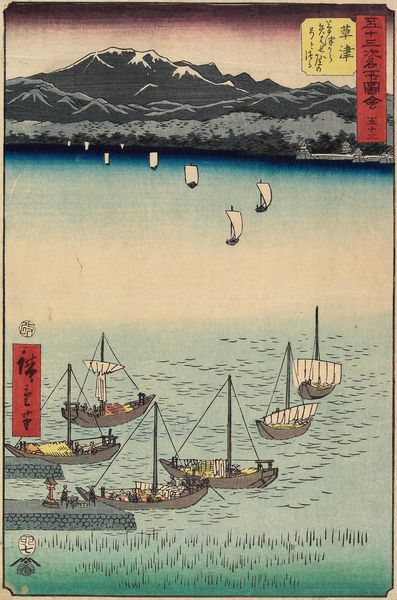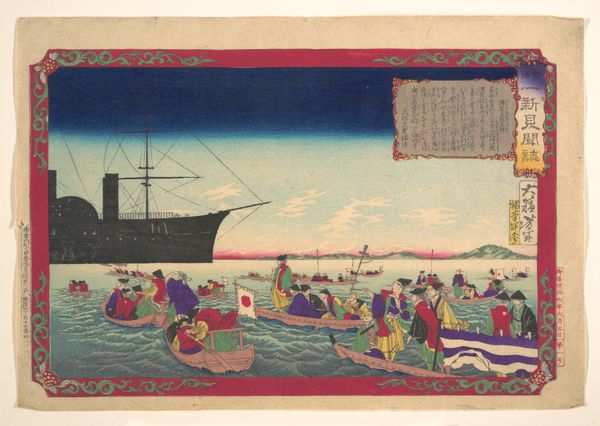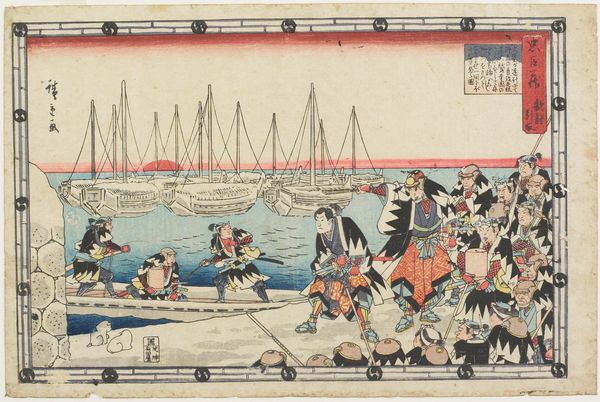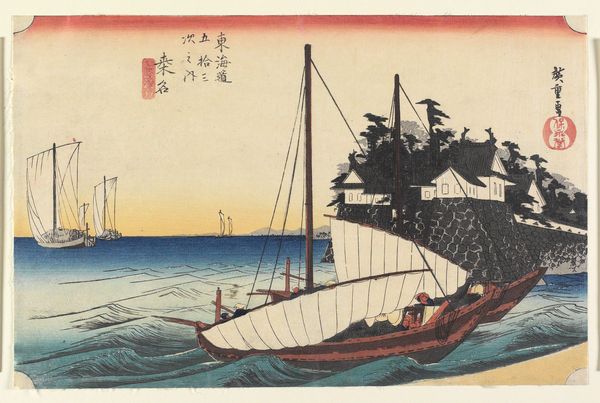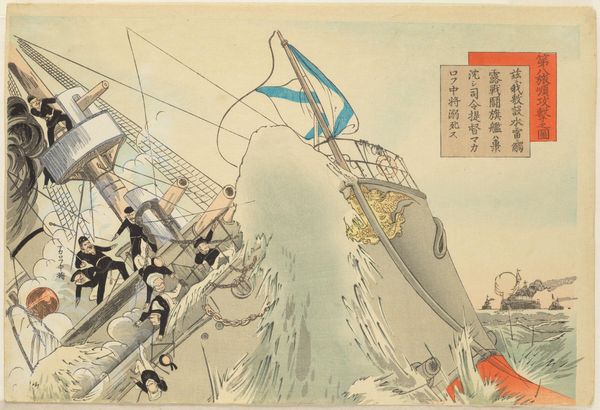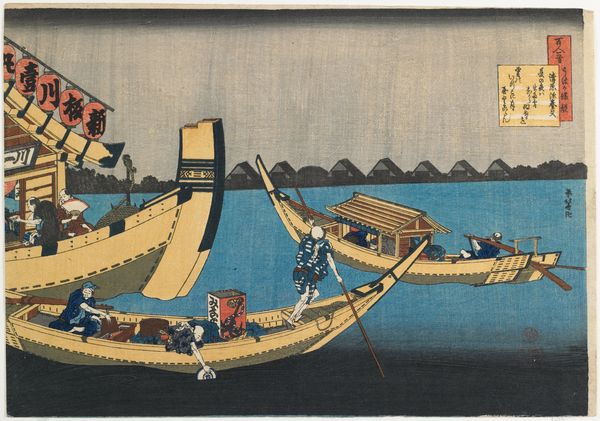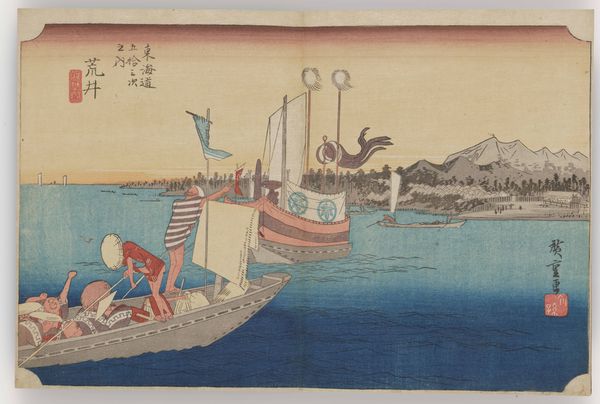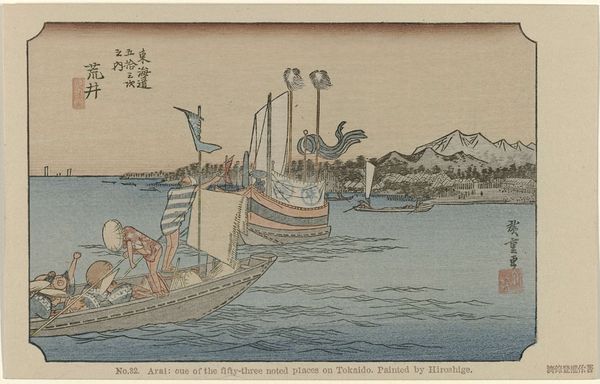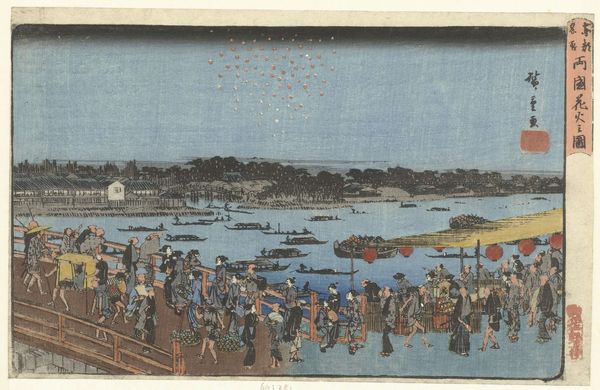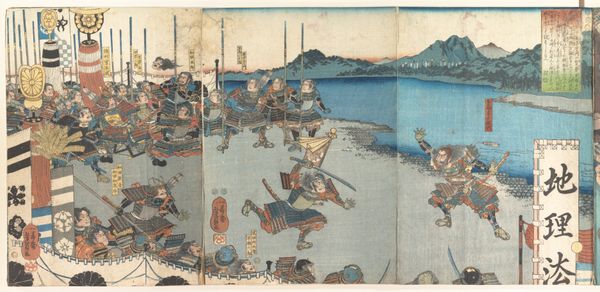
Dimensions: height 246 mm, width 358 mm
Copyright: Rijks Museum: Open Domain
Curator: What strikes me immediately about this piece is the atmosphere. There’s such a sense of calm, of the everyday quietly unfolding. Editor: Exactly. The woodblock print before us, titled "Fujisawa," was crafted between 1912 and 1916 by Fujikawa Tamenobu. We’re lucky to view it here at the Rijksmuseum, as the medium is so delicate! We see figures in a boat on the water and more boats along the water toward the shore, capturing a moment of daily life. Curator: Right? It's so cool how Tamenobu uses a few strategic lines to convey movement—the sweep of the sail, the ripples on the water. They all speak to the cultural emphasis on transience. This is the aesthetics of Ukiyo-e. Editor: Absolutely! And look closely; note the man throwing what looks like a rope or maybe even some fishing gear? To me, it embodies potential; there's anticipation in that gesture, as if anything could happen. Symbolically, this speaks to the chance encounter and newness that are central themes in this genre. Curator: Precisely! And how that single figure is framed against the enormous sail. The sheer size of the sail becomes an almost monumental form, underscoring human action against natural forces and, more profoundly, the cultural shift toward trade and commerce as a driving force of early modern Japan. Editor: Thinking about its psychological weight, those other figures in the boat huddle, not engaged with that decisive action; there are complex and shifting inner lives and public performances happening on this boat. We can read them as bystanders to their time's changes. I almost imagine a kind of visual poem playing out with so much nuance from such spare means. Curator: I think you've hit the bullseye. Tamenobu captures not only a specific scene but also the broader undercurrents of cultural identity through a transient and passing moment. We see reflected, therefore, much about Japanese identity between realism and representational painting and cultural priorities at that moment. Editor: Yes, in every chosen element—the active pose, the watching men, the distant boats, all rendered with spareness of line— we perceive the layers of individual agency against grander forces. Very good food for thought!
Comments
No comments
Be the first to comment and join the conversation on the ultimate creative platform.
